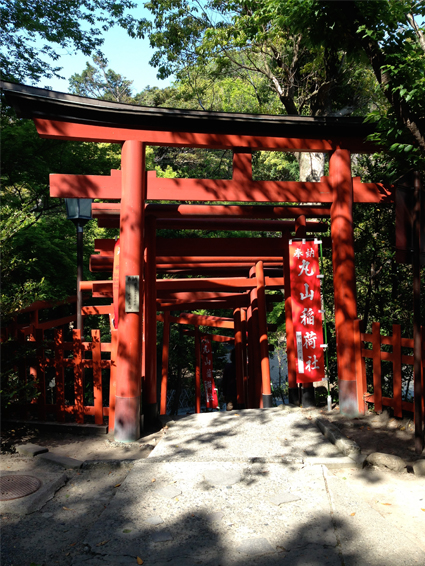Abstraction, Pattern and Geometry
/If you go looking for geometry, it will likely find you.
Kokeshi こけし
An exhibition of Kokeshi at Toraya, MidTown Plaza, Tokyo.
These minimally designed wooden dolls are the epitome of distilling a human form down to its most basic shape. The body of the doll, a vertical trunk; reminiscent of the columnar aspect of a kimono, is usually decorated with floral motifs and then layered with wax. The artist signs his name at the bottom of the doll.
Originating from the north of Japan, around 1600, the name comes from the Sendai dialect. A common etymology for the name of these dolls: wood (木 "ki"), small (小 ko) and dolls (芥子 "keshi"). Beauty in the stylized painted ornamentation is conveyed without the need to represent the appendages of the human form. Stripped down to the most fundamental shapes of a sphere and a cylinder, it makes for a compelling and distinct design.
Fabric wallpaper
New Year Ceremonies at the Hie Shrine in Akasaka, Tokyo.
On New Year's eve, a "blessing" of arrows at the Hie Shrine in Akasaka. For me, the pattern of the backdrop stole the show. Dynamic pattern creeping into the everyday. Or does it become purely a glossed over background.
Wagashi 和菓子: edible fine soft sculpture
This form of Japanese confectionery has taken soft sculpture to a higher level. A personal favorite are the Namagashi 生菓子, the sweet bean paste variety. Categorized as "wet confectionery", containing 30% or more moisture content, the "Jō namagashi" 上生菓子 are sold by confectionery stores in different permutations during the year. Celebrating different plant forms in keeping with the seasons, these delectable treats are an accompaniment to a traditional Japanese tea ceremony.
Austere Abstraction: Kadomatsu 門松
A "gate pine" is often placed in pairs in front of the entrance of buildings or homes to usher in the new year and welcome ancestral spirits. Most common versions are created from Pine, Bamboo and Ume tree sprigs. The shrubbery used represent longevity, prosperity and steadfastness. The core arrangement utilizes three large bamboo shoots set at different heights. These present heaven, humanity and earth. The pair signify the male and female counterparts.
Torii: Shrine Gateways
Stacked Torii on higher ground at the Tsurugaoka Hachimangu Shrine in Kamakura.
The symbol of a torii usually indicates the location of a shrine on digital maps. It is one of the most striking traditional architectural structures in Japan. There may be multiple toriis gates leading into the grounds of a shrine.
Reduced to a drawing of lines, it is made up of two vertical and two horizontal lines producing a stark dynamic symmetry.
Tokyo Opera City Concert Hall
A stunning concert hall, from its lofty pinnacle to the warm glow of the wooden walls and ceilings.
From the Acoustical Society of America: The TOC Concert Hall, called ‘‘Takemitsu Memorial’’ in honor of the late composer Toru Takemitsu, was opened September 10, 1997. With a seating capacity of 1636 and a volume of 15 300 m3, the hall is sized to cover the musical range from recitals to orchestral concerts. The plan is rectangular in shape but, by request of the architect Takahiko Yanagisawa, the ceiling is a distorted pyramid, with its peak nearer the stage than the rear of the wall.
This unique shape had to be analyzed using a CAD model and a 1:10 scale model so that all interior surfaces would be adjusted in shape and absorption to yield optimum values for RT, EDT, IACCE3, surface diffusion, initial time delay gap, and loudness [Beranek, Concert and Opera Halls (ASA, New York, 1996)]. To provide a better ensemble condition for the musicians on stage and to provide early reflections to several other regions, a square canopy, almost 10 m on a side, is suspended above the stage. The pyramidal ceiling has diffusing elements added to simulate coffers. Schroeder QRDs on the ceiling surface facing the orchestra are used to control echo and to add sound diffusion. With audience, RT=1.95 s, G=6.4 dB, and [1−IACCE3]=0.72.
To put it in less scientific terminology, the design is rad.






